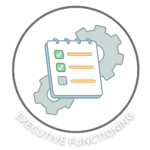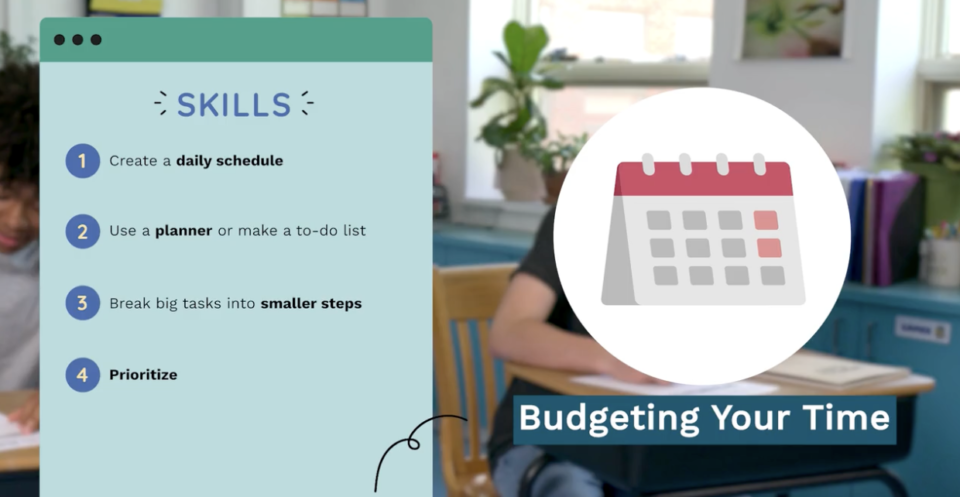
Time management and organization are crucial skills that can significantly impact a middle schooler’s academic success and personal well-being. However, many students struggle to budget their time effectively, leading to stress, missed deadlines, and a lack of balance between schoolwork and extracurricular activities. Everyday Speech’s video modeling lesson offers an engaging and practical approach to helping middle schoolers budget their time. In this blog post, we’ll explore how middle school teachers can use this resource to help their students develop strong time management and organization habits.
Why Time Management Matters for Middle Schoolers
Teaching middle school students how to budget their time is important because:
- Promotes Academic Success: Helps students meet deadlines, stay on top of assignments, and reduce last-minute cramming.
- Reduces Stress: Effective time management allows students to balance schoolwork with extracurricular activities and personal time, reducing overall stress.
- Builds Responsibility: Encourages students to take ownership of their time and tasks, fostering a sense of responsibility.
- Prepares for Future Success: Establishing strong time management skills in middle school sets the foundation for success in high school, college, and beyond.
Introducing Everyday Speech’s Video Modeling Lesson
Everyday Speech’s video modeling lesson is an effective tool that demonstrates practical time management and organization strategies in a way that is relatable to middle schoolers. The video features real-life scenarios where students must prioritize tasks, create schedules, and develop habits that support their academic and personal goals.

Helping Middle Schoolers Budget their Time
Objective
By the end of the lesson, students will understand how to budget their time effectively, prioritize tasks, and establish organization habits that support their success.
Materials Needed
- Access to Everyday Speech’s video modeling lesson on time management and organization
- Whiteboard and markers
- Reflection journals or worksheets
- A planner or calendar template (printable or digital)
Duration
45-60 minutes
Activity Steps
1. Introduction to Time Management (10 minutes)
Begin by discussing the importance of time management with your students. Explain how budgeting their time can help them achieve their goals, reduce stress, and create a balanced lifestyle.
Discussion Questions:
- What does it mean to budget your time?
- Why is it important to manage your time effectively?
- How can good time management skills help you in school and in your personal life?
Key Concepts to Cover:
- Prioritization: Understanding which tasks are most important and need to be completed first.
- Planning: Creating a schedule or plan to allocate time for different activities.
- Consistency: Developing regular habits and routines to stay organized and on track.
2. Watching the Video Modeling Lesson (15 minutes)
Show the Everyday Speech video modeling lesson to your class (see sample at the end of this blog). As students watch, encourage them to take notes on the strategies demonstrated in the video. The video should include scenarios such as:
- Prioritizing homework assignments based on due dates and difficulty.
- Creating a daily or weekly schedule that includes time for schoolwork, extracurricular activities, and relaxation.
- Using tools like planners, calendars, or digital apps to stay organized.
Post-Viewing Discussion:
- What strategies did the students in the video use to manage their time?
- How did they prioritize their tasks?
- What tools or methods did they use to stay organized?
3. Guided Practice with Planners or Calendars (20 minutes)
After watching the video, provide students with a planner or calendar template (printable or digital). Guide them through the process of creating a schedule for the week ahead. Encourage them to:
- List Upcoming Tasks: Write down all assignments, tests, and extracurricular activities.
- Prioritize Tasks: Identify which tasks are most urgent and should be completed first.
- Allocate Time: Assign specific time slots for each task, ensuring they leave time for breaks and relaxation.
Example Planning Activity:
- Monday: Allocate time for completing math homework, studying for a science test, and attending soccer practice.
- Tuesday: Plan to finish reading assignments, work on a group project, and have some downtime.
Benefits of This Activity:
- Hands-On Experience: Students gain practical experience in budgeting their time and organizing their tasks.
- Visual Representation: A planner or calendar provides a visual representation of their time, making it easier to manage.
4. Reflection and Goal-Setting (10 minutes)
Have students reflect on their current time management habits and set goals for improvement. Provide them with reflection journals or worksheets to document their thoughts and plans.
Reflection Prompts:
- How do you currently manage your time? What works well, and what could be improved?
- What is one time management strategy you learned from the video that you want to try?
- What are your time management goals for the next week or month?
Goal-Setting Tips:
- Encourage students to set specific, measurable, achievable, relevant, and time-bound (SMART) goals.
- Examples might include “I will complete my homework every day by 7 PM” or “I will use my planner to schedule my week every Sunday.”
Unlock all of our executive functioning materials by signing up for your free trial today – no credit card required!
Access the full Social Communication Curriculum HERE!
Instant access to thousands of no-prep social skills activities, over 1000+ video lessons, and engaging games designed to enhance learning and development.
Conclusion
Helping middle schoolers budget their time and create organization habits is essential for their academic success and overall well-being. Everyday Speech’s video modeling lesson offers an engaging and practical way to introduce these skills in the classroom. By implementing the lesson and activities outlined in this blog post, middle school teachers can help their students develop strong time management habits that will serve them well throughout their lives. For more resources and tips on teaching essential life skills, stay tuned to our blog.
Sample Video
Students learn best by watching others their same-age model the behavior! Check out a sample video modeling lesson below. We offer our entire Social-Emotional Learning platform free for 14 days here!
Related Blog Posts:
Navigating Middle School: Enhancing Social Skills Through Videos
Teaching Middle School Students to Stay Calm and Solve Problems
Promoting Mental Well-being: SEL Lessons for Middle School Students







